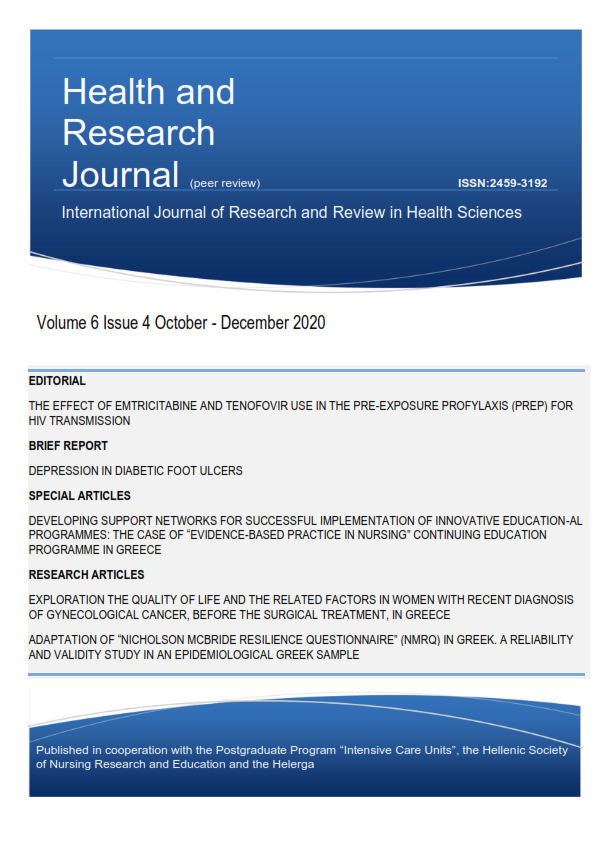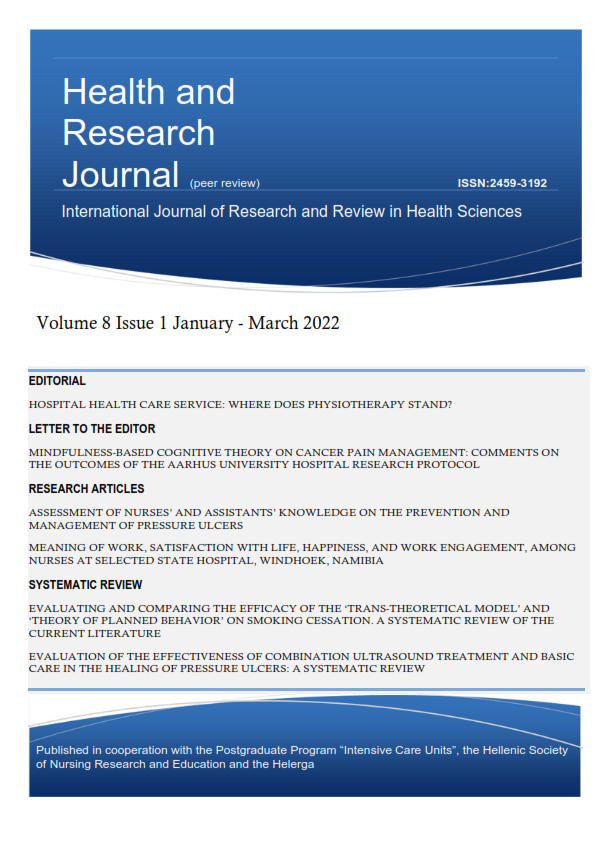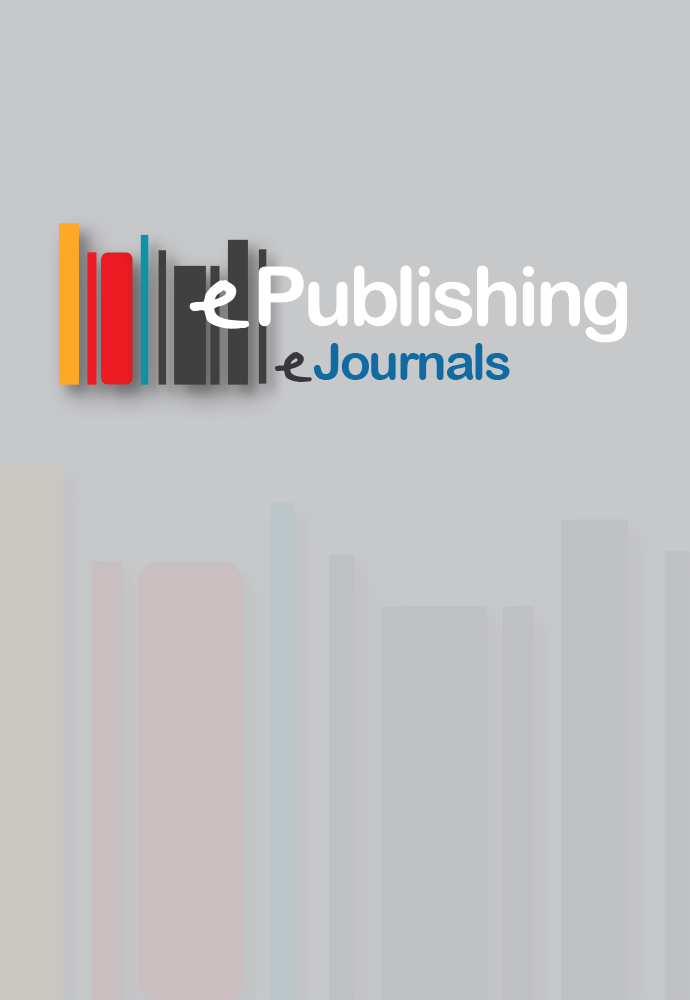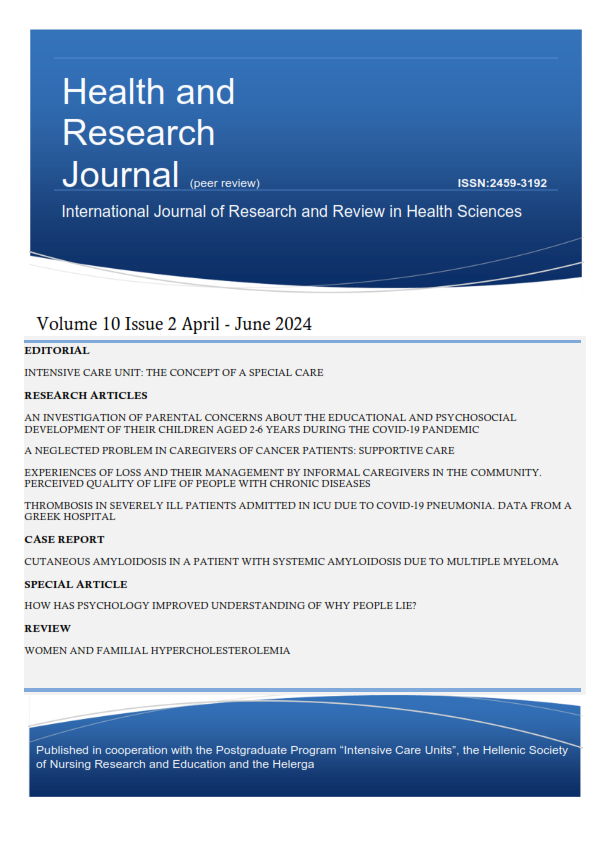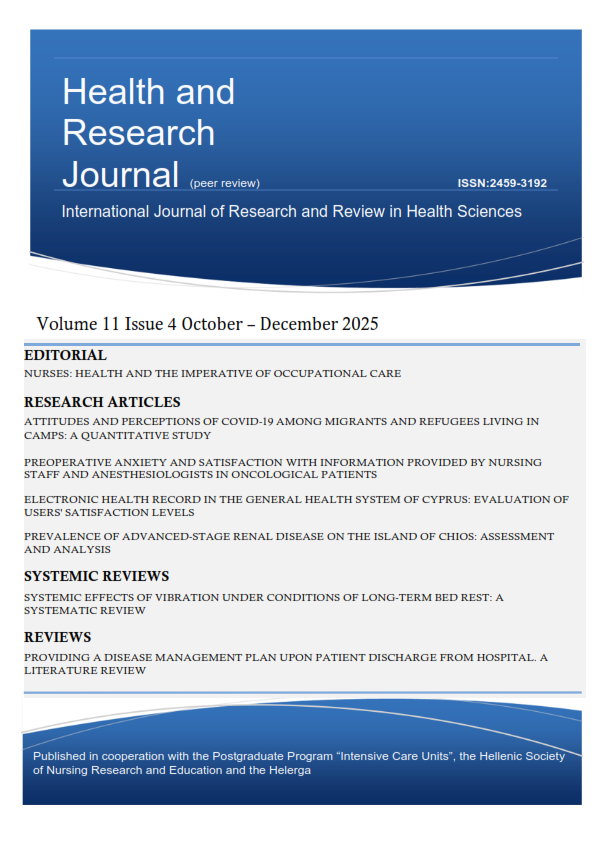The correlation between gram negative infection and ICU -acquired weakness in critically ill patients. A study from Greece.
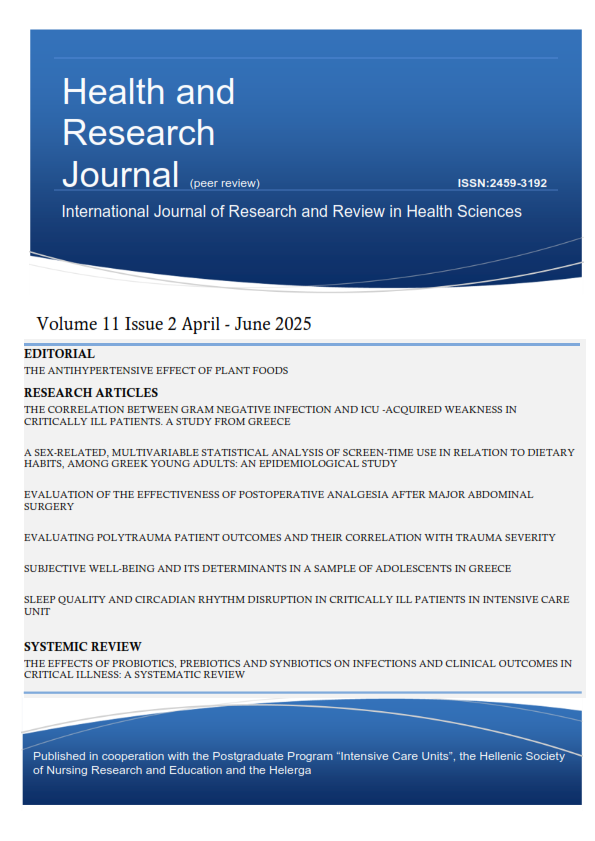
Abstract
Background: ICU-acquired weakness (ICU-AW) is a clinical syndrome that occurs in critically ill patients. Weaning from the ventilator becomes difficult due to the generalized muscle weakness. The effects of ICU-AW directly affect the quality of life of patients with significant motor and sensory disabilities. This study aimed to investigate how gram-negative infections affected muscle power in patients on critical illness.
Method and Material: The study involved 99 critically ill patients in a Greek General Hospital's intensive care unit who required mechanical ventilation for over 72 hours. 21 of them had gram-positive blood cultures, identified using the "Emrora" database. The severity scales used were APACHE II, SOFA, and SAPS III. Clinical examinations of muscular strength were performed within 48 hours of ICU release, using the MRC muscle strength scale.
Results: The total MRC score of patients (21) with gram (-) microbiemia was 47.5 ± 13.5 (mean ± SD) while in the patients (19) with gram (+) it was 50 ± 14 (mean ± SD) with p=0.5. Of the 21 patients who were gram positive (-) blood culture, 7 were diagnosed with ICU-AW and had a total MRC score of 34 ±14.
Conclusions: Gram-negative microbiemia negatively impacts ICU-AW patients' muscle strength, increasing survival rates, raising concerns about long-term issues in the ICU, particularly ICU-AW. Further research is needed to understand the processes associated with SIRS and ICU-AW development.
Article Details
- How to Cite
-
Varvitsioti, D., Manthou, P., Kollia, T., Pouriki, S., Agapitou, T., Bourazani, M., Tsikrikas, S., Chalkidis, N., Zarkadoulas, N., & S. Chrysi, M. (2025). The correlation between gram negative infection and ICU -acquired weakness in critically ill patients. A study from Greece. Health & Research Journal, 11(2), 100–108. https://doi.org/10.12681/healthresj.38186
- Section
- Original Articles
Copyright notice:
The journal "Health and Research Journal" reserves the rights for copyright of the content of the website and also the copyright of the articles published.
By virtue of their appearance in this journal, the articles are free to be used for non-commercial purposes. However, the articles cannot and must not be used in anyway, published elsewhere or modified without any reference to the author and the first publication of the article.



